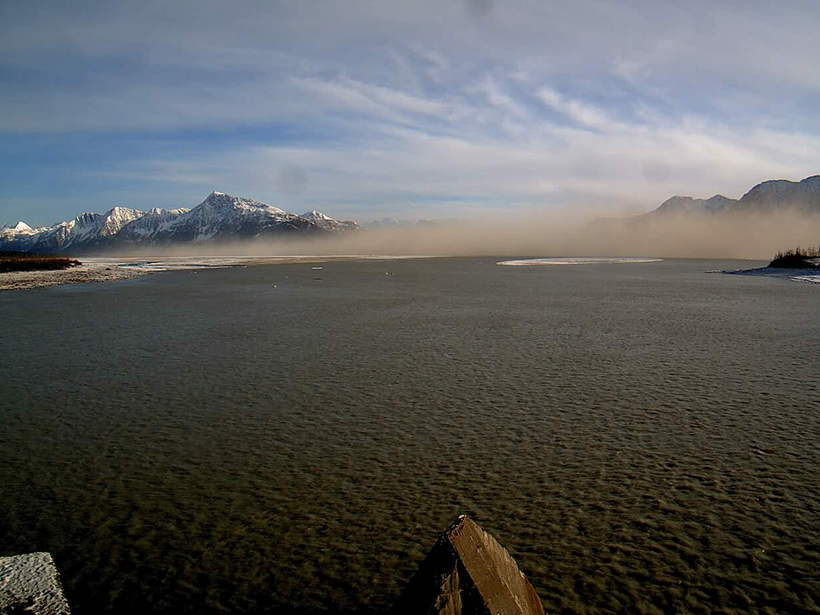Geoscientists currently have a very limited understanding of how dust at high latitudes (poleward of 50°N and 40°S) is generated and transported or affects geophysical environments and ecosystems downwind. Incomplete data sets, extreme conditions for observations, and numerous challenges in modeling make it difficult to draw definitive conclusions about this phenomenon.

Recent research suggests that although high-latitude dust sources contribute only 5% to the global dust budget, they are important modern contributors to the total atmospheric dust load in the Arctic (approximately 30%) and Southern Ocean. Moreover, modern dust transport at high latitudes provides a highly suitable analogue for reconstructing paleo-aeolian processes that operated during the Pleistocene, as well as for understanding and quantifying the dependency of present-day processes—particularly glacial retreat—on global warming.
The organizers of the High Latitude Cold Climate Dust (HLCCD) conference were motivated by the need to consolidate current knowledge of dust that originates from within high-latitude environments, to prioritize short- and long-term research goals, and to foster new cold-region-specific collaborations within the international community of scientists working on dust. Fifty-two researchers originating from 15 countries attended this open conference, run by members of the HLCCD Network.
The scope of the presentations delivered varied from small-scale local process studies to large-scale regional and even hemispherical treatments. Invited talks identified the effects of dust deposition on marine, terrestrial, and freshwater environments; compared various types of paleoenvironmental records; and addressed the challenges of remotely sensing and modeling high-latitude dust.

The large body of evidence presented confirmed the importance of high-latitude dust. Meeting participants agreed that the role of high-latitude dust in Earth system research is gaining broader recognition; however, numerous challenges remain in regard to its characterization. Although identifying the frequency of dust events has been a central goal of work carried out in many high-latitude regions (e.g., Iceland, Greenland, Alaska, Patagonia, and Antarctica), the magnitude of these events is rarely measured in situ in the field. Collective evidence gained from wind tunnel experiments, dust samplers, and remote sensing data clearly shows that several key controls of dust emission in high-latitude regions are unique to cold, humid climates.
A main conclusion from the meeting is that a multiobservational platform approach (surface, aerial, and space) is needed to observe these events, which may be encompassed in complementary field and laboratory experiments. Such knowledge will lead to not only further refinement of the global dust budget but also improved projections concerning the provenance of dust found in high-latitude ice cores. Given the diverse scientific domains in which high-latitude dust plays a role, future progress will depend on cross-disciplinary collaboration.

Conference support and sponsorship was provided by the University of Iceland, British Society for Geomorphology, Loughborough University, and The Leverhulme Trust. The HLCCD Network is funded by The Leverhulme Trust (IN-2013-036).
—Santiago Gassó (email: [email protected]), NASA Goddard Earth Sciences Technology and Research, Greenbelt, Md.; Throstur Thorsteinsson, Environment and Natural Resources and Institute of Earth Sciences, University of Iceland, Reykjavík; and Cheryl McKenna-Neuman, Trent Environmental Wind Tunnel Research Group, Trent University, Peterborough, ON, Canada
Citation:
Gassó , S.,Thorsteinsson, T., and McKenna-Neuman, C. (2018), Assessing the many influences of high-latitude dust, Eos, 99, https://doi.org/10.1029/2018EO090315. Published on 23 January 2018.
Text © 2018. The authors. CC BY 3.0
Except where otherwise noted, images are subject to copyright. Any reuse without express permission from the copyright owner is prohibited.

